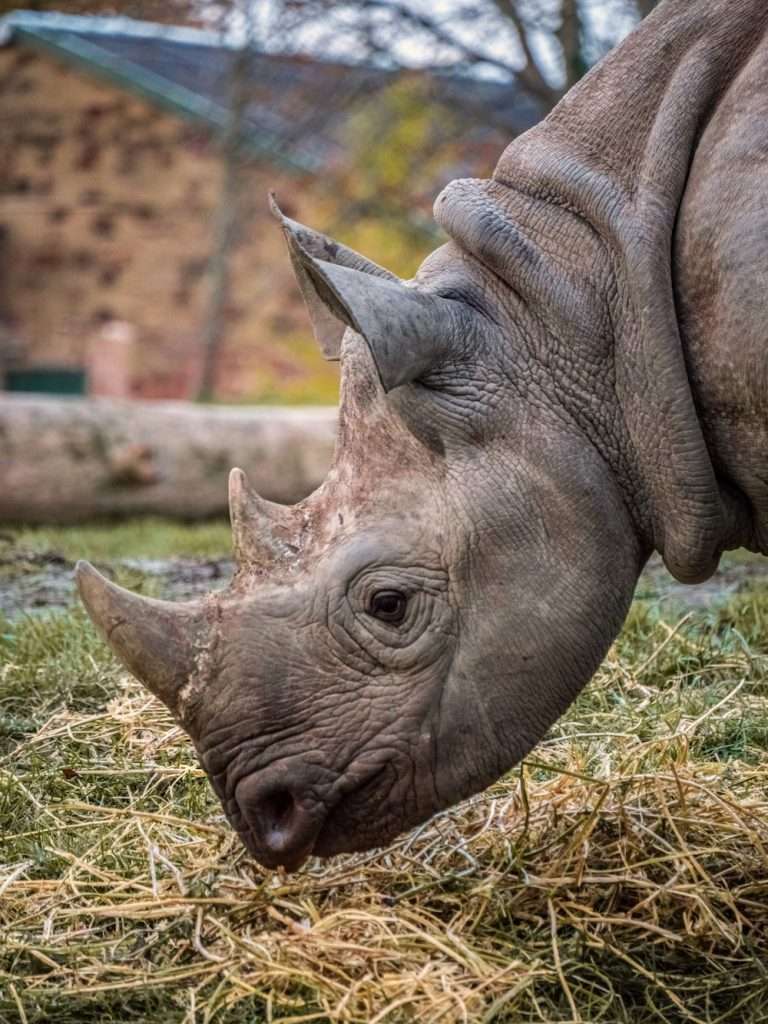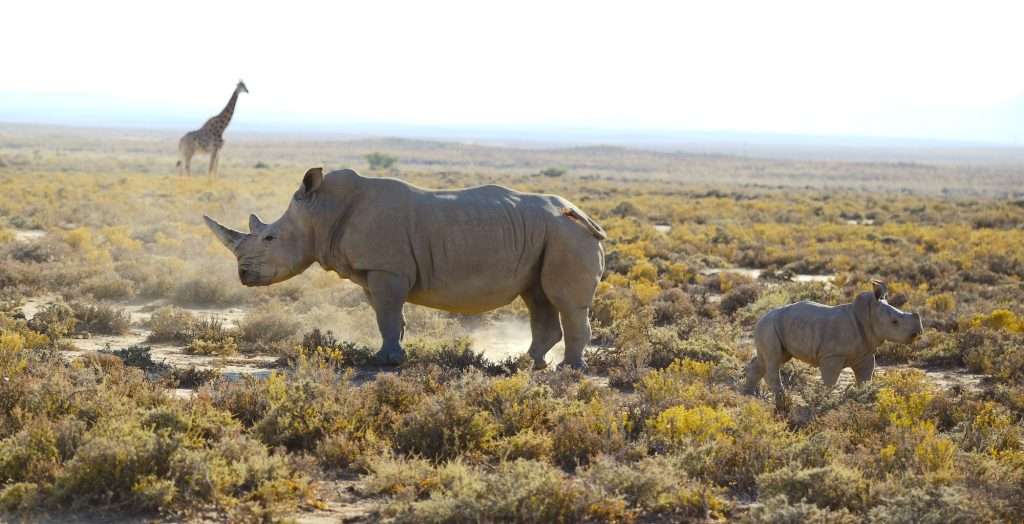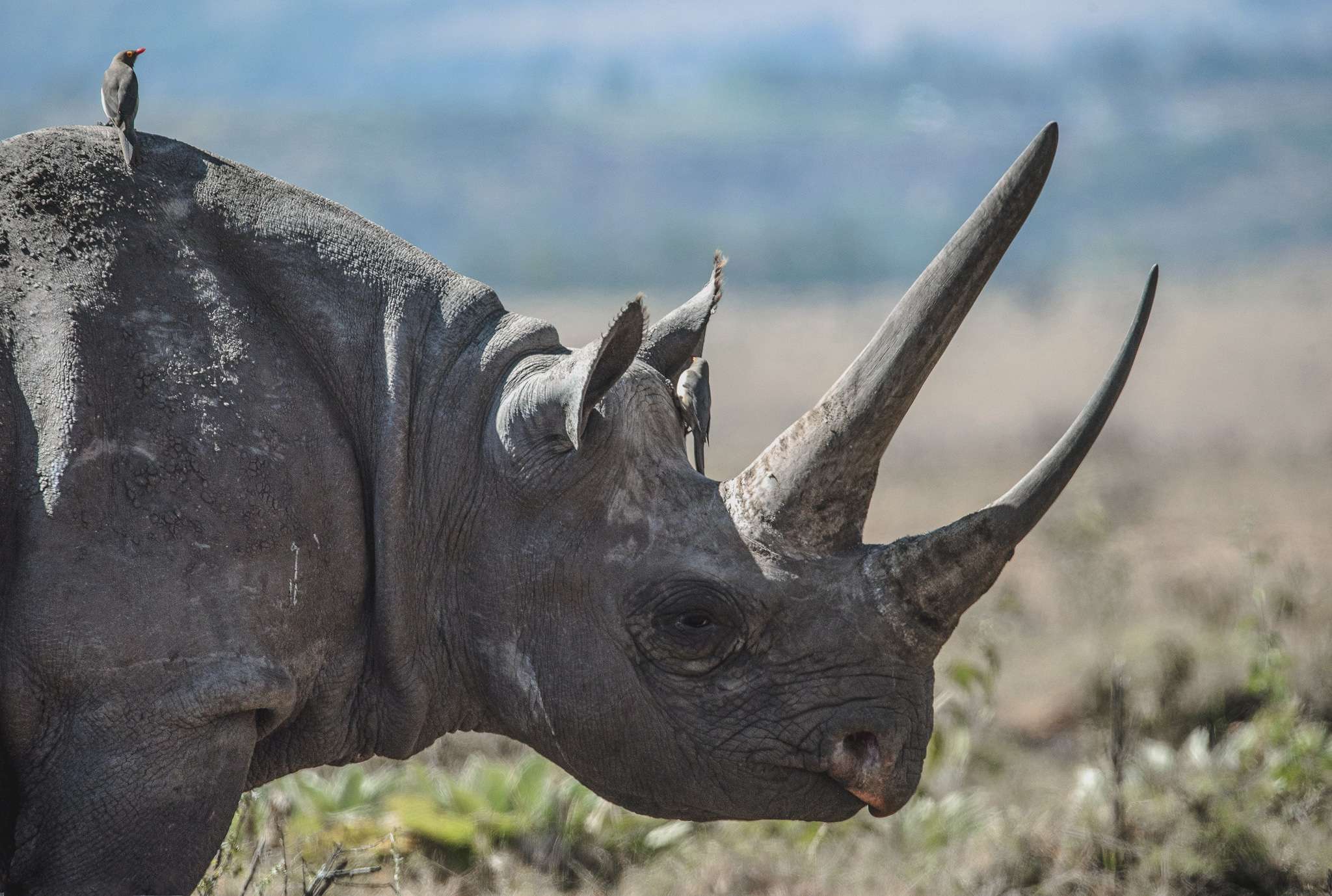A new approach to wildlife conservation comes to aid South Africa’s black rhinoceroses through a World Bank-led bond.
In an effort to protect the dwindling black rhinoceros population in South Africa, the World Bank has announced the launch of the world’s first wildlife conservation bond.
The $150 million Sustainable Development Bond raised through the bond is aimed at boosting rhino numbers; South Africa is home to half of the black rhinoceros population. Estimates put the total black rhino population at between 5,000 and 5,500 individuals.
The five-year “rhino bond” would pay investors returns based on the animals’ resurgence in the South African Addo Elephant National Park and the Great Fish River Nature Reserve. Investors would net returns between 3.7 percent and 9.2 percent in a potential performance payment from the Global Environment Facility (GEF), if the population increases. If there’s no improvement, they get no return, the World Bank says.
Black rhinoceroses in South Africa
“As South Africa we are excited to be at the forefront of an innovative new financial instrument aimed at boosting our efforts to protect the world’s largest rhino population,” said Minister Barbara Creecy, the Minister of Forestry, Fisheries and the Environment, South Africa.
“We would like to acknowledge and express our appreciation for the considerable effort by numerous role players over the last few years that has resulted in this much needed injection of funding into the biodiversity sector,” she added.

“This innovative conservation bond, which the Global Environment Facility is delighted to support, opens a new avenue for financing biodiversity protection at a critically important time. This is a great example of how capital markets can meet both investor and conservation priorities,” said Carlos Manuel Rodriguez, GEF CEO and Chairperson.
“The GEF’s financial backing for this bond gave it the risk/return profile that investors needed to enter the biodiversity space, and I am confident that their engagement will only grow from here, with future conservation bonds that benefit other umbrella species and their ecosystems,” he said.
Stephen M. Liberatore, Head of ESG/Impact – Global Fixed Income at Nuveen, the project’s lead investor, says the effort not only provides an attractive return potential, “but also the direct and measurable outcomes we look for under our proprietary Impact Framework,” he says.
“We are especially hopeful that this type of public-private partnership can serve as a template for future transactions to help improve biodiversity globally.”
The Wildlife Conservation Bond
A first-of-its-kind approach to wildlife protection, the financially incentivized bond could set a new precedent for conservation efforts.
Investors in the new bond will not receive traditional coupon payments on the bond, the World Bank says. Instead, the issuer will make conservation investment payments that support the rhinoceros protection projects in the two parks.
Conservation Alpha and the Zoological Society of London will verify the population growth, and if the efforts succeed, investors will receive payment at maturity paid by the IBRD with funds provided by a performance-based grant from the GEF, in addition to principal redemption of the bond, the World Bank says.
“This represents a new approach in conservation financing that passes project risks to capital market investors and allows donors to pay for conservation outcomes,” the bank says.

“The Rhino Bond is a groundbreaking approach to enabling private sector investment in global public goods — in this case, biodiversity conservation, a key global development challenge,” World Bank Group President David Malpass said in a statement.
“The pay-for-success financial structure protects an endangered species and strengthens South Africa’s conservation efforts by leveraging the World Bank’s infrastructure and track record in capital markets. Importantly, it can be replicated and scaled to channel more private capital for other conservation and climate actions and development objectives around the world,” he said.
Umbrella species
Rhinoceroses are umbrella species, playing crucial roles in Africa’s ecosystems. The black rhinoceros is only found in Africa. It has been a poaching target for decades, with numbers dropping by 96 percent between the 1970s and 1990s. Rhinos are poached for their horns, believed to hold medicinal properties in Chinese medicine, among other uses.
The bond will help more than just rhinoceroses, though; the conservation efforts mean more local jobs supporting communities across South Africa as well as protection of critical biodiversity in the park and reserves.
“We are confident that this will assist in increasing the rhino growth rate and stimulate the development of additional novel market-based mechanisms to support the objectives of the New Deal for People with Nature,” Creecy said. “South Africa is committed to securing nature’s contribution to people through well-managed and expanding Conservation Areas that contribute to inclusive rural economic growth in thriving Biodiversity Economy Nodes.”


